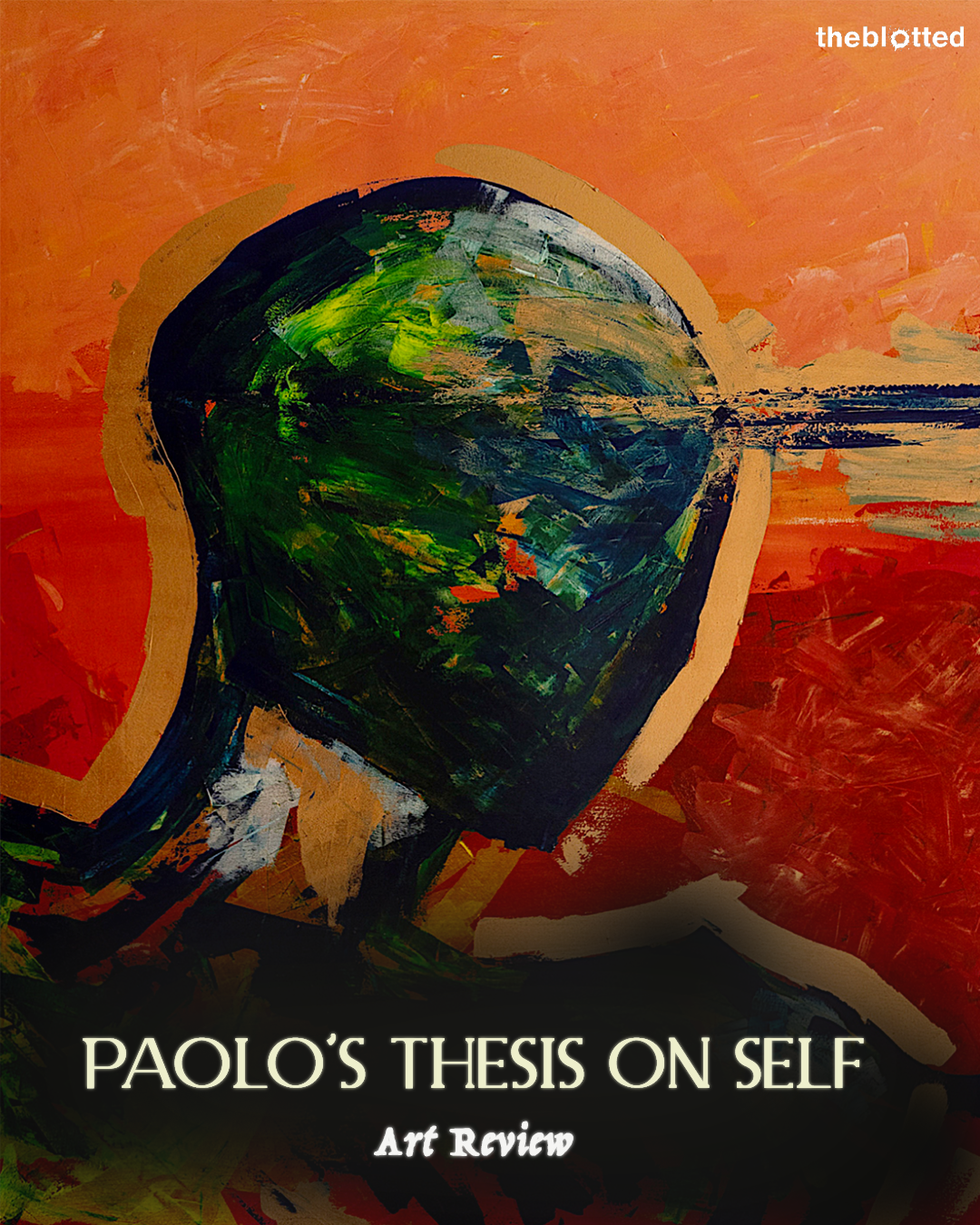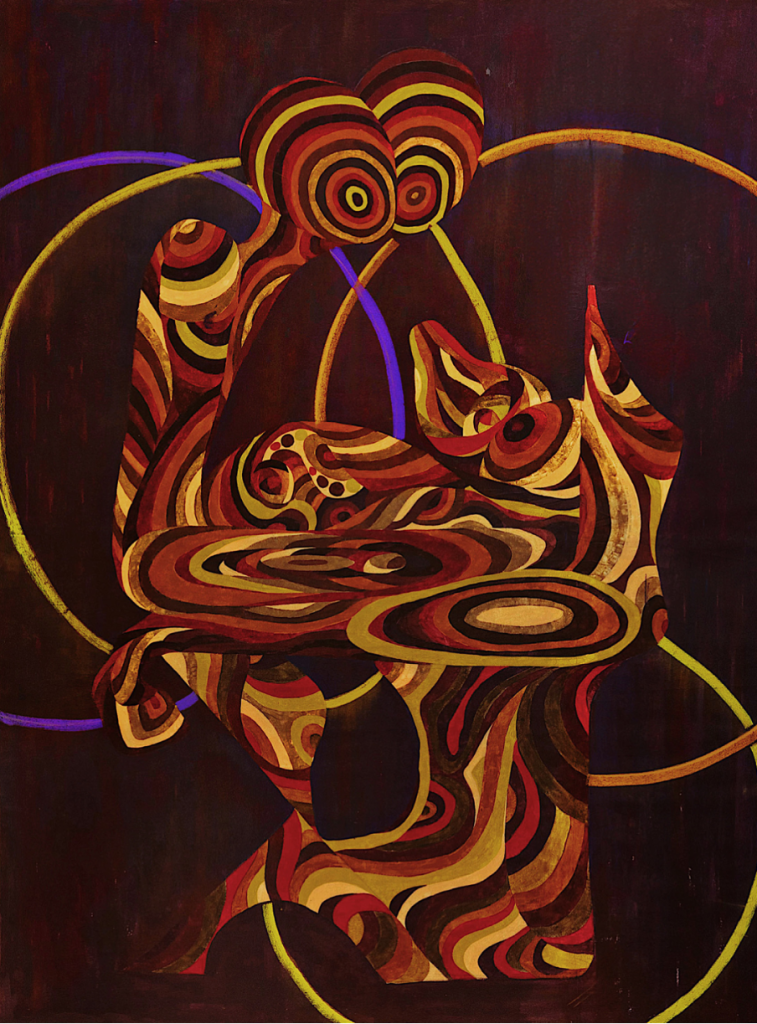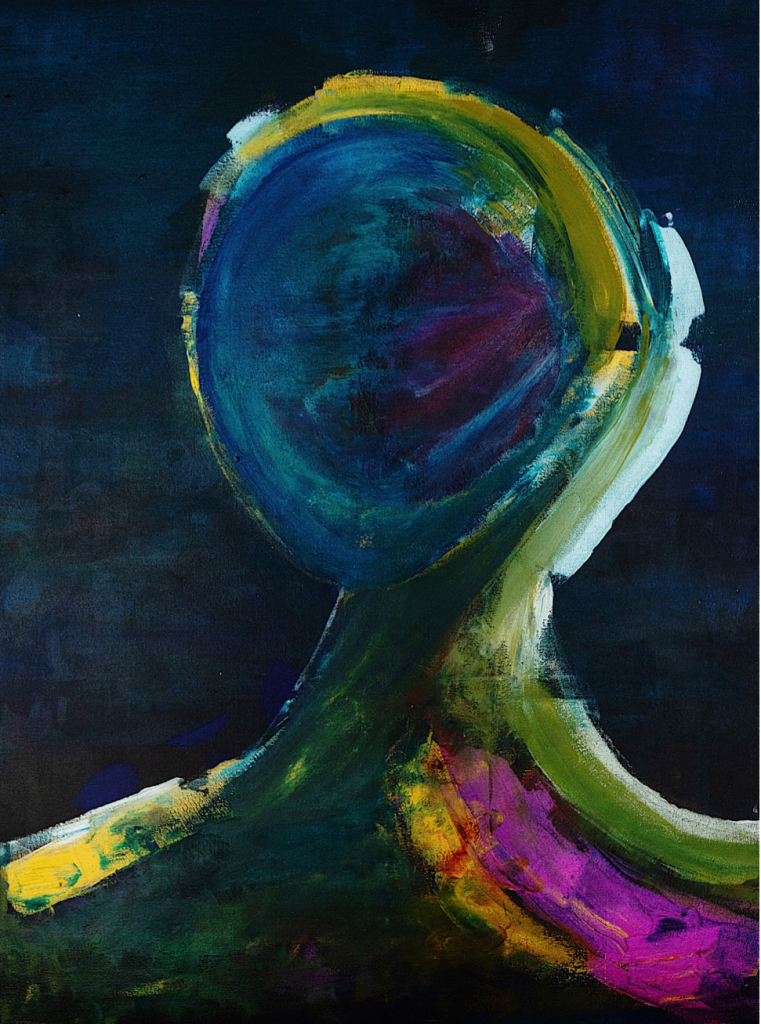
Recently, the walls within new Kokopelli Gallery site in Ikoyi hosted Paolo Sisiano’s art exhibition titled “We are okay, but we are not like before”. These works, a sprawling thesis on self from the perspective of a brooder is a cohesive story told across 24 artworks which were made over 7 months and a lifetime of experiences. Paolo bares it all, limitations of the human mind, guilt, grief, uncertainty. The curator, Ian Audifferen, who is also Paolo’s long time friend wrote that this body of work approaches human emotion from “a dual perspective of retrospecting while introspecting.”
There is an emphasis on symmetry here, faces spiral into themselves like the insides of an onion. Layers, similar to how humans present themselves within different contexts. There’s a lot of circles, spirals— this after all, is the shape of the universe. There is a lot of movement too; works like “Again”, “Then Till There” feel congealed in stasis. They tell much about the fleeting, barrelling nature of life, and also give away some background about the artist. Paolo, who started his creative journey as a dancer, before transitioning into fashion attests to his love for dance in his conversation with Audifferen, Nicole Asinugo, Tony Agbapuonwu.
This conversation, moderated by Dare Herald, founder of Kokopelli paid dividends in context and further exploration of themes within the pieces. Paolo Sisiano, light skin, heavy set is rooted in his musing and deconstructs his works like surgery. “Water colour is very interesting to me because it continues to dance even after the brush stroke”, Paolo shares.
The messages mesh with the medium: Ink suggests, watercolour on paper questions, acrylic on canvas asserts and scraping, his own technique brings it all together. It seems he pored over every detail before, and while creating this expansive work. Each painting carries a descriptive note from the artist on what it means, or what he thinks it means.
It is figurative, abstract. Some of the meanings left open-ended are seized from Paolo’s grasp through shared experiences. An attendee observed the largesse of “Again” that towered at 182.88cm x 243.84cm saying there’s a side-profile of someone’s face on the canvas if you look from a certain distance. On close inspection, one would realise Paolo penned “If you need to stand up to see it, it’s not really there” within the strokes. These works don’t just aim to reveal, they toy with you. Within its profoundness, it thrusts questions back into your arms. “This is life”, it seems to say, “You are not owed any answers.”

Again, 2023 (Framed) Acrylic on canvas 182.88cm x 243.84cm
Paolo leaned on gallery layout to create a more dynamic experience. Artwork are grouped by loose themes but definite moods. Turmoil resides in the blue room, with paintings dedicated to indecisions, frenzy and doubt. There’s a tentative calm, or clarity in the white room. Other artworks are laid out across gallery entry and the general open space was reserved for artworks that didn’t question, or observe but made statements.
“We are okay, but we are not like before” is ambitious with its execution, “Passerby” is a faceless painting that uses hues of blue and green to create context – and with touches of violet within the figure to show the universe that exists in each person we walk by everyday. Everyone has their own problems, it is selfish to think otherwise.
Solipsism as a school of thought aligns adjacent with this idea, it infers that only the self is truly known. British philosopher F.H. Bradley, in Appearance and Reality (1893), wrote: “I cannot transcend experience, and experience must be my experience. From this it follows that nothing beyond my self exists; for what is experience is its [the self’s] states.” Solipsism thrives in self indulgence, however true self awareness cannot be complete without factoring others, and their experiences before drawing conclusions.
The artist offers his own thoughts through a dualistic lens. He seeks balance. There is deep acknowledgement for the depth of each individual person, yet, in paintings like “Then till there”, Paolo Sisiano broaches the ephemeral nature of our individual impact in each other’s lives. These seemingly conflicting ideas create layered observations that forces one to dig deep. It is cut from the same cloth that drives our modern outlook centred on beauty and minimalism while still reserving a seat at the table for imperfections.
We have seen how airbrushed photos have fallen out of favour in portraits. Freckles, acne, pimples are essentials to what makes us human. Our rough around the edges. Concepts like Kintsugi are championed, we repurpose broken artefacts into bespoke jewellery. Interior decorators now prefer stressed glass because the web of cracks feel more striking to the eye. Sometimes, holes are even punched through walls so we can fresco around it. From an outward view the sight of imperfection allures, and the possibility to fix it attracts yet, we reject imperfection within ourselves and would rather embrace picture-perfect lifestyles. It would seem that the modern human blooms in these contradictions.



Passer-by, 2023 (Framed) Acrylic on canvas 74.93cm c 100.33cm
During the panel session, Paolo sat pensive, contemplating his opus– he shares openly, but without details or personal anecdotes. It is not the stories, but the lessons he carries with him here. Through the personal and interpersonal, one would wonder why the artist chose not to make daring commentary on the nation, or where the world is headed.
In a blitz interview with The Blotted, Paolo Sisiano expressed that sociology is represented, but in a way that reflects on an individual level. Expectations, strata, identification are all societal constructs imposed on self. “Human beings are complex, and complexed” he said. That is what art does, it investigates, it stirs, it identifies and then reveals
“We are okay, but we are not like before” ran through September 3rd to 24th. Yet, in this pastiche of emotions that can only be chalked up to mixed feelings, there exists a seedling of triumph buried within the works. A nudge to continue on, pressing forward despite troubles that the human mind stumbles upon or creates for itself.
When asked what lessons he learnt from the research, and eventual catharsis involved in bringing this work together, Paolo laughed and said “The answer is in the blue room. What is the point? What is the point to life? To living?” The infinite nature of questions remains more satisfying than the finality of an answer. We are not cast in stone, and our responses can improve based on experience.


Marilyn October 8, 2023
Impactful!
Pingback:Samson Akinnire: Junk, Waste, Trash; Art - the blotted December 9, 2023